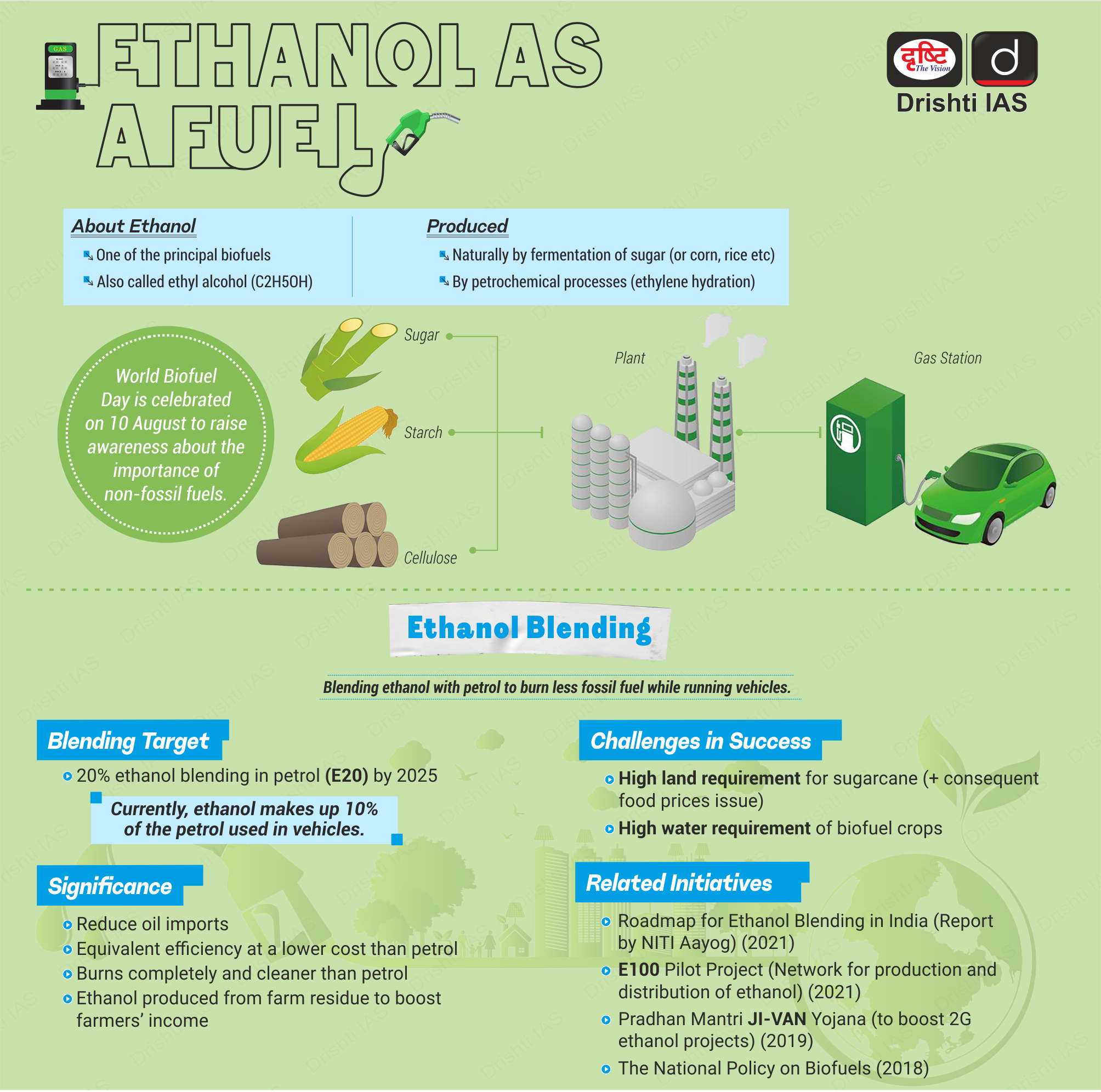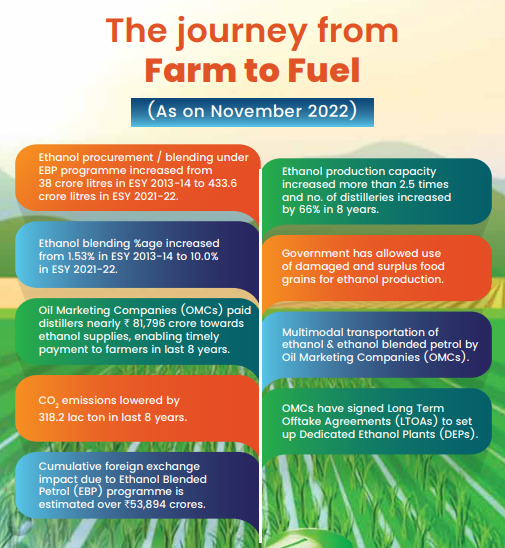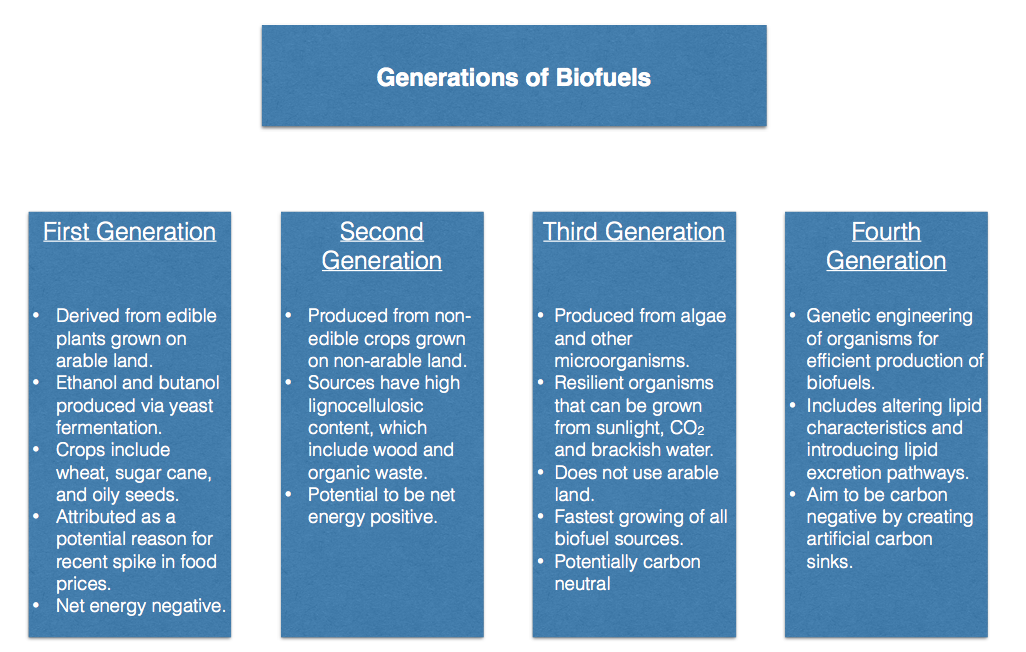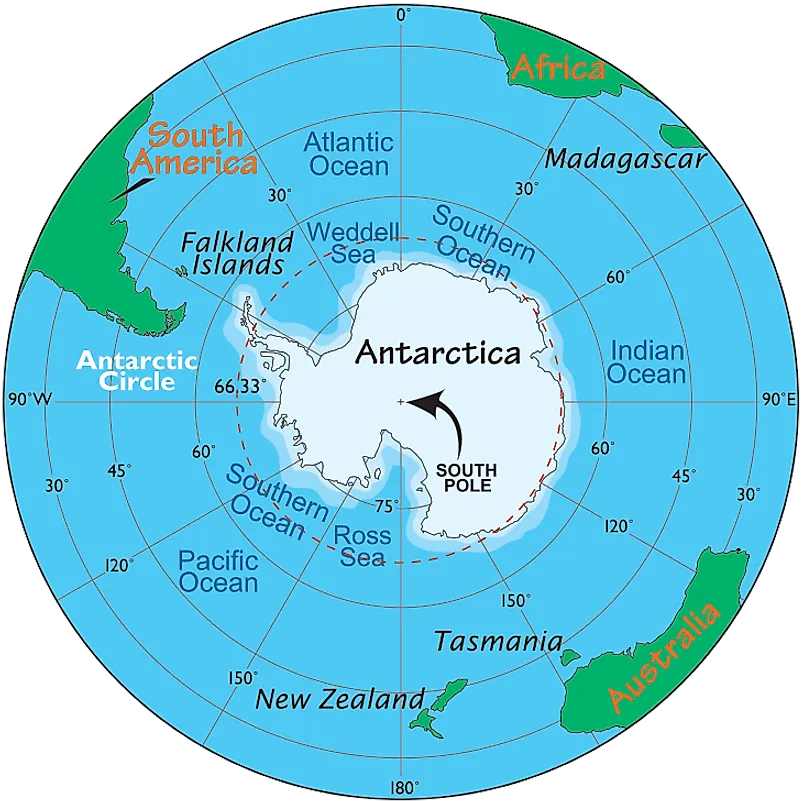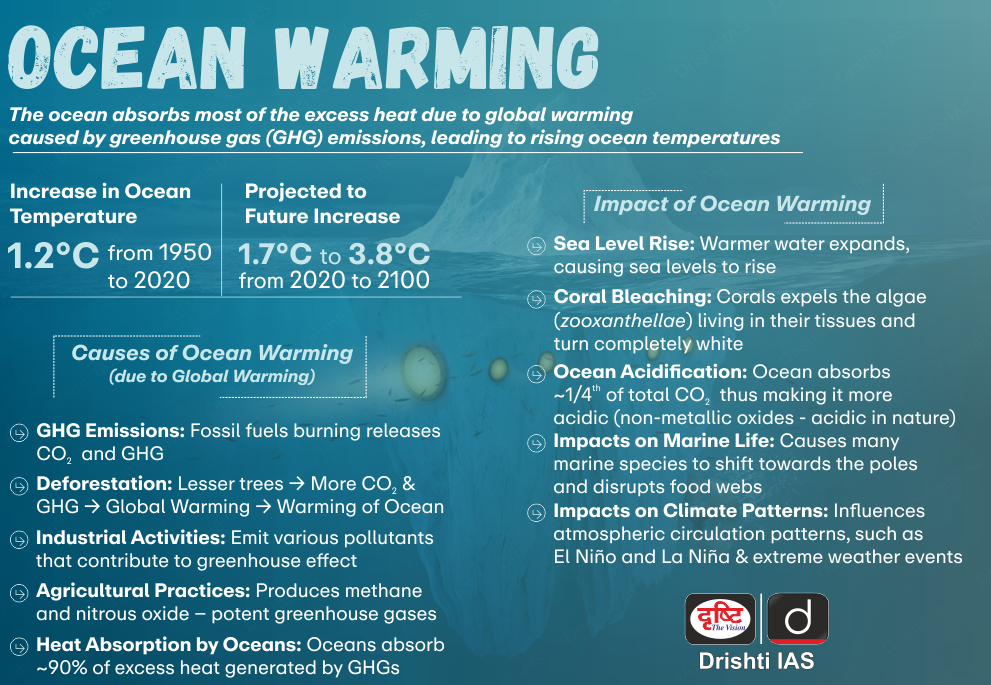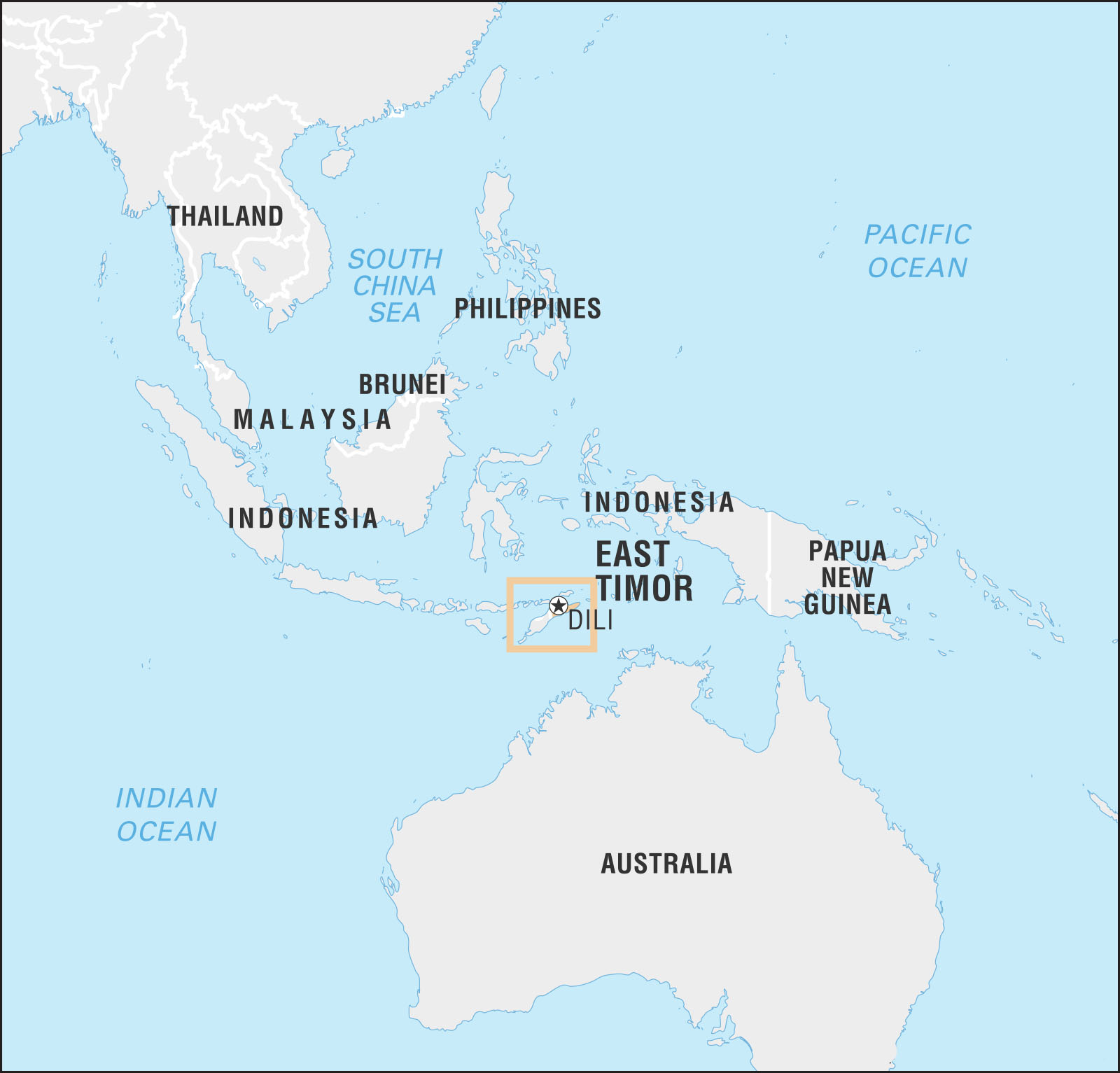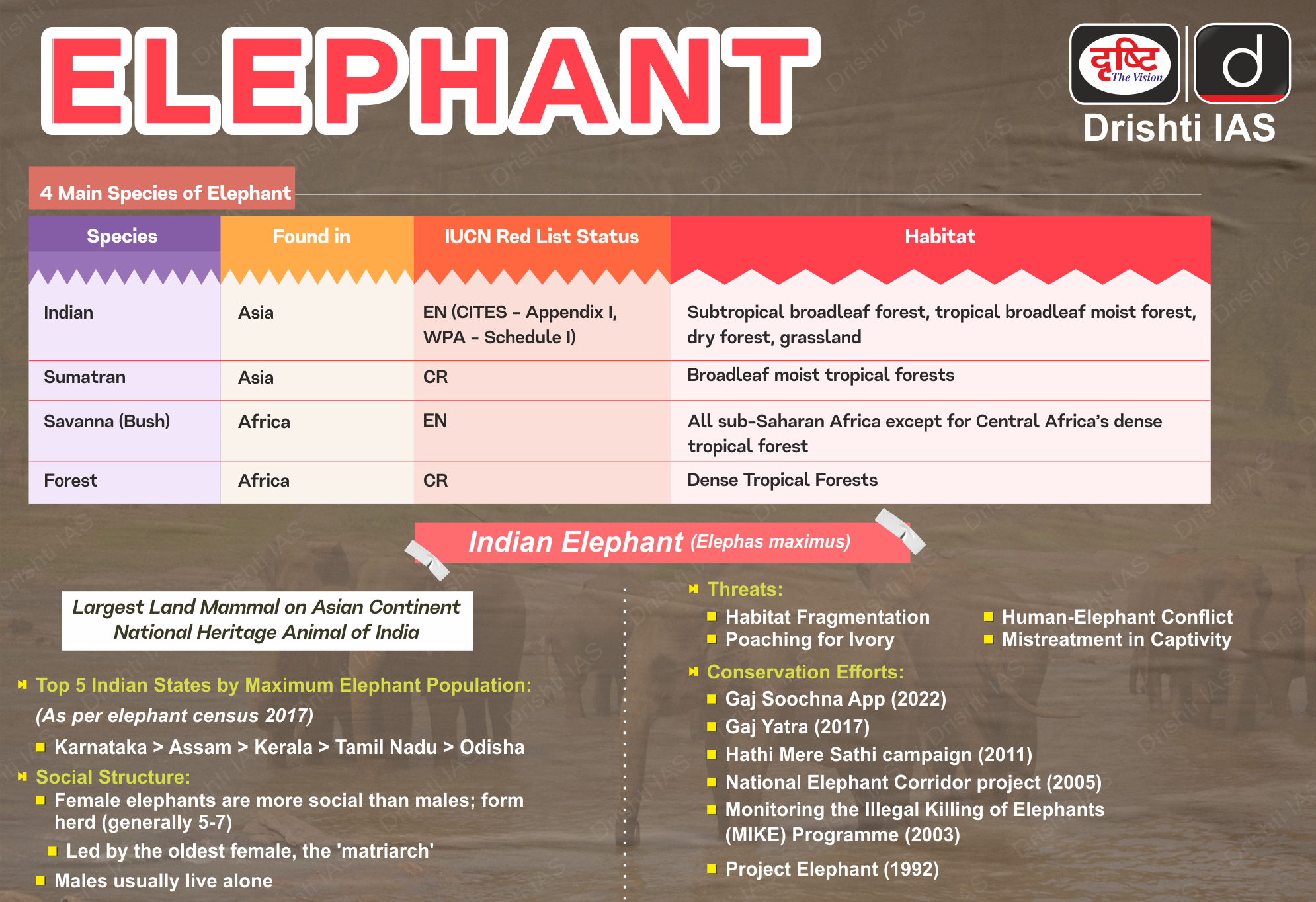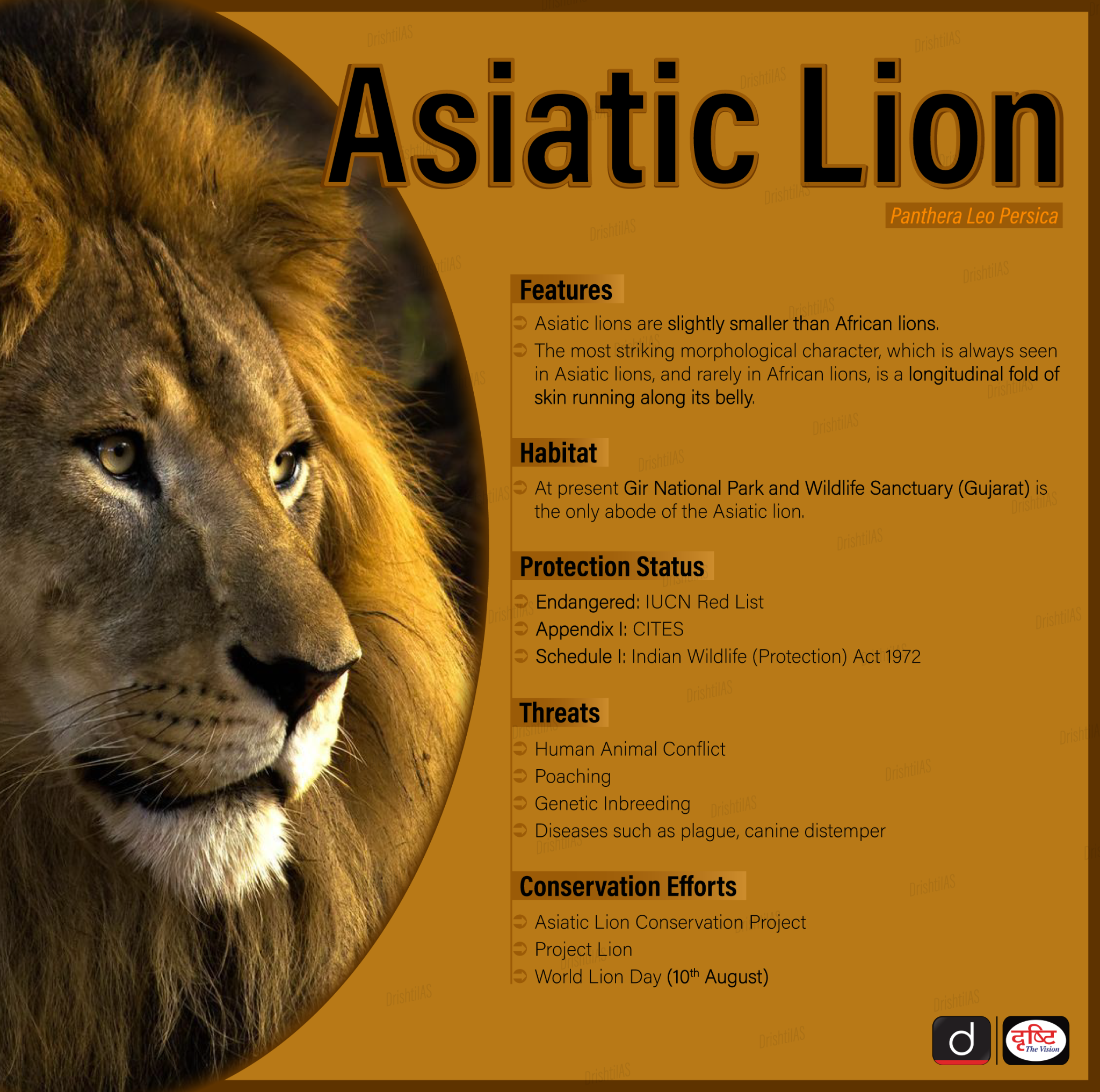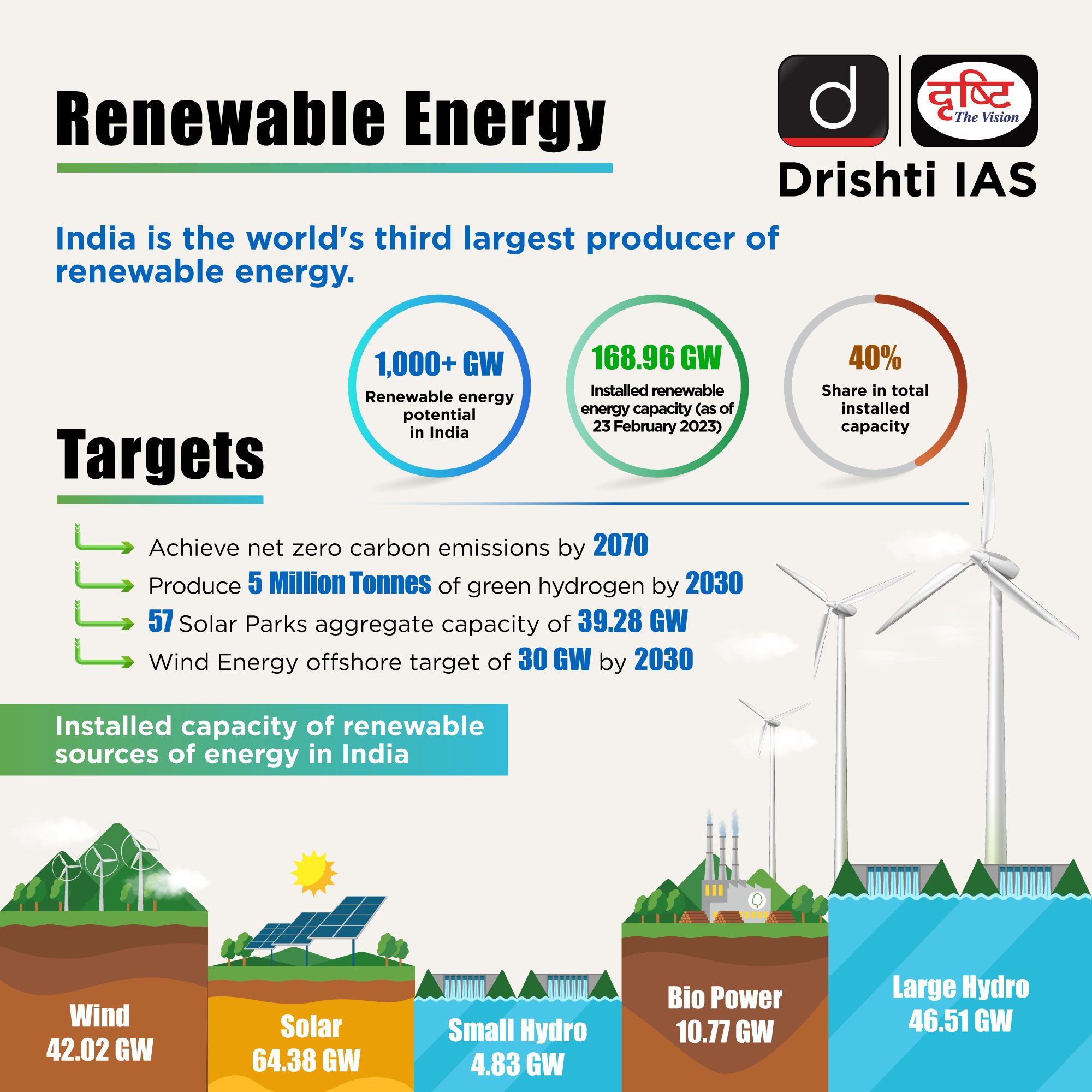Miscellaneous
India at Paris Olympics 2024
For Prelims: Paris Olympics 2024, Target Olympic Podium Scheme, National Sports Development Fund, Rajiv Gandhi Khel Ratna, Arjuna Awards, Dhyanchand Awards
For Mains: Sports Governance and Issues, Sports & Affairs, Challenges and Issues in Indian Olympic Sports
Why in News?
The Paris Olympics 2024 have concluded with India finishing 71st in the medal tally, a decline from its 48th place in Tokyo 2020. Despite winning six medals, including one silver and five bronze, the nation experienced several near misses and disheartening outcomes that have sparked discussions about the future of Indian sports.
What were the Highlights of India’s Performance at Paris Olympics 2024?
| Indian Medal Winners at Paris Olympics 2024 | ||
| Indian athletes | Medal | Event |
| Manu Bhaker | Bronze | Women’s 10m air pistol event |
| Manu Bhaker and Sarabjot Singh | Bronze | 10m air pistol mixed team event |
| Swapnil Kusale | Bronze | Men’s 50m rifle 3 positions |
| Indian hockey team | Bronze | Men’s hockey |
| Neeraj Chopra | Silver | Men’s Javelin Throw |
| Aman Sehrawat | Bronze | Wrestling Men’s 57kg freestyle event |
Note
- Neeraj Chopra secured a silver medal in javelin with a throw of 89.45m. This was his second Olympic medal, making him India's fifth two-time Olympic medallist.
- Manu Bhaker became the first Indian woman to win an Olympic shooting medal. She also became the first athlete from independent India to win two medals in a single Games by clinching a medal in both individual and mixed team events.
- India won three shooting medals, including the first-ever Olympic medal in the 50m rifle 3 positions, achieved by Swapnil Kusale. This was the highest tally for India in shooting at the Olympics.
- Indian athletes competed in 69 medal events across 16 sports, such as archery, athletics, badminton, boxing, equestrian, golf, hockey, judo, rowing, sailing, shooting, swimming, table tennis, and tennis.
- Lakshya Sen became the first Indian to reach the semi-finals in men's badminton at the Olympics, finishing fourth.
- Wrestler Vinesh Phogat after reaching the final in the women’s 50 kg category, Phogat was disqualified for being overweight by 100 grams.
- To date, India has won a total of 41 Olympic medals. Notable milestones include Norman Pritchard's Silver Medals (1900 Paris), KD Jadhav's Bronze (1952 Helsinki), Karnam Malleswari's Bronze (2000 Sydney), Abhinav Bindra's Gold (2008 Beijing), and Neeraj Chopra's Gold (2020 Tokyo).
- Men's Hockey has won 13 medals, including eight golds, and Wrestling has won eight medals. India's best-ever Olympic performance was at Tokyo 2020, with seven medals, including one gold. India's second-best performance was in the 2012 London Olympics when it won six medals(two silver and four bronze).
Why India Struggles to Secure Olympic Medals?
- Talent Identification: In India, talent identification often occurs on an ad-hoc basis, with limited reach and effectiveness.
- There are systemic issues in scouting and identifying young athletes, particularly in remote areas.
- Infrastructure and Resources: Many regions in India lack the necessary infrastructure and resources to train athletes effectively.
- Limited access to training facilities, coaching expertise, and financial support can hinder the development of potential talent.
- Many athletes struggle due to insufficient financial backing from the government. For instance, Shiva Keshavan, India's top Winter Olympian, had to resort to crowdfunding to finance his training and participation.
- Despite the growing number of billionaires and private wealth in India, there is still a significant gap in sponsorship and investment in sports other than cricket.
- Cricket’s Dominance: Cricket's overwhelming popularity in India has created an imbalance in the sports landscape, with 87% of sports capital allocated to cricket and only 13% for all other sports. This disproportionate allocation has hindered the development of Olympic sports.
- The lack of a robust sports culture and media promotion outside cricket has been a barrier.
- A more balanced approach to sports investment and promotion is necessary to support Olympic sports adequately and create a more inclusive and competitive sports culture in India.
- Insufficient Sports Policies: India's sports policies have historically been fragmented and underfunded.
- There have been efforts to improve sports infrastructure and support athletes, such as the Target Olympic Podium Scheme (TOPS). However, these initiatives are relatively recent and have yet to yield significant results.
- Long-term Development: India’s sports programs often focus on short-term successes rather than long-term athlete development.
- Developing world-class athletes requires sustained investment and planning over many years.
- Examples: Successful Olympic countries have long-term development plans that include scouting young talent, providing them with early training, and supporting them through their careers.
- Corruption and Politics in Sports Administration: Sports administration in India is often dominated by politicians and bureaucrats, leading to the politicization of sports governance.
- Corruption and bureaucratic hurdles frequently impede the development of athletes, with sportspersons' interests often taking a backseat.
- Indian sport organizations, especially governing bodies, have not adapted to the challenges of a professional and commercialised sector, relying on volunteers instead of hiring skilled professionals.
- The recent conflicts within the Wrestling Federation are indicative of the broader issues plaguing Indian sports administration.
- Absence of a Sports Culture: In India, there is a societal preference for education over sports. Families often prioritise careers in fields like medicine or accounting, viewing sports as less viable for financial security.
- India's complex social stratification, with strong ties to caste and regional identity, further hinders the development of a unified sports culture. Many communities discourage pursuing sports at an elite level, focusing instead on traditional roles.
What can India do to Improve its Olympic Performance?
- Grassroots Development: There needs to be a stronger emphasis on developing sports at the grassroots level. Identifying and nurturing talent from a young age across various sports disciplines can help build a strong foundation.
- Investment in Infrastructure: Building world-class training facilities and providing athletes with access to the best coaching and support systems are crucial. This includes psychological support, nutrition, and injury management.
- Small Nations like Jamaica and Grenada, with much smaller populations, regularly outperform India at the Olympics. Their focused investment in specific sports, like sprinting, shows the importance of targeted development.
- Empowering Athletes: Athletes are the primary stakeholders in sports, and their involvement in decision-making can bring much-needed accountability and transparency to sports organizations.
- Collegiate Sports System: India can develop a collegiate sports system that mirrors the National Collegiate Athletics Association (NCAA) in the United States.
- The NCAA has produced a staggering number of Olympic champions, not just for the US but for countries around the world. If the NCAA were a country, it would have topped the medal tally with 60 gold medals in Paris Olympics 2024.
- Many athletes from small and large nations owe their Olympic success to training and competing in the NCAA, making the American college sports system a key player in global sports.
- India's collegiate sports system should strike a balance between academics and athletics by offering scholarships and academic support to attract talented athletes who might otherwise drop out of sports.
- By fostering regular inter-college and inter-university competitions across various sports, young athletes will gain more exposure to high-pressure situations, preparing them for international events like the Olympics.
- Cultural Shift: Changing societal attitudes towards sports is essential. Encouraging families to support children in pursuing sports careers and integrating sports into the education system can help.
- China, which shares some socio-economic similarities with India, has excelled by systematically identifying and nurturing talent from a young age.
- The government’s deliberate and sustained investment in sports has resulted in a significant Olympic medal haul.
- Increased Government Support: The government should provide more consistent and substantial funding for Olympic sports. This includes direct support to athletes, as well as investments in coaching and international exposure.
- Focusing on Growth: India must aim to triple its athlete count for the 2028 Los Angeles Olympics, increasing from 117 to better compete against the US and Japan, which have over 600 and 400 athletes, respectively.
- This increase should naturally lead to more medals. India Instead of solely focusing on hosting the 2036 Games, the priority should be on improving medal tallies in the Los Angeles 2028 Summer Olympics and beyond to establish India as an Olympic sporting nation. Paris serves as a moment for serious introspection and learning.
What are the Initiatives Related to Sports Development in India?
- Khelo India
- National Sports Development Fund (NSDF)
- Sports Authority of India (SAI): It was set up as a Society registered under the Societies Act, 1860 in 1984 to promote sports and games.
- SAI manages several schemes aimed at youth and senior sports promotion, including the National Sports Academy (NSA) Scheme, Center of Excellence Scheme, National Sports Talent Contest Scheme (NSTC), Army Boys Sports Company Scheme, Special Area Games Scheme, and COME and PLAY Scheme.
- National Sports Awards: Rajiv Gandhi Khel Ratna, Arjuna Awards, Dhyanchand Awards, and Dronacharya Awards.
- These awards are the highest sporting honours in India, celebrating excellence and inspiring future generations.
- Scheme for Sports & Games for People with Disabilities: Introduced as a Central Sector Scheme in 2009-10, the program provides specialised training and support to athletes with disabilities, encouraging their participation in sports and enhancing their skills.
- Rajiv Gandhi Khel Abhiyan: Launched in 2014, this federally funded program aims to build sports complexes at the block level, providing infrastructure for both indoor and outdoor sports.
- Fit India Movement
|
Drishti Mains Question: Analyze India's performance at the Olympics. What strategies and reforms can be implemented to enhance India's performance in future Olympic Games?" |
UPSC Civil Services Examination, Previous Year Question (PYQ)
Prelims
Q. Consider the following statements in respect of the Laureus World Sports Award which was instituted in the year 2000: (2021)
- American golfer Tiger Woods was the first winner of this award.
- The award was received mostly by ‘Formula One’ players so far.
- Roger Federer received this award maximum number of times compared to others.
Which of the above statements are correct?
(a) 1 and 2 only
(b) 2 and 3 only
(c) 1 and 3 only
(d) 1, 2 and 3
Ans: (c)

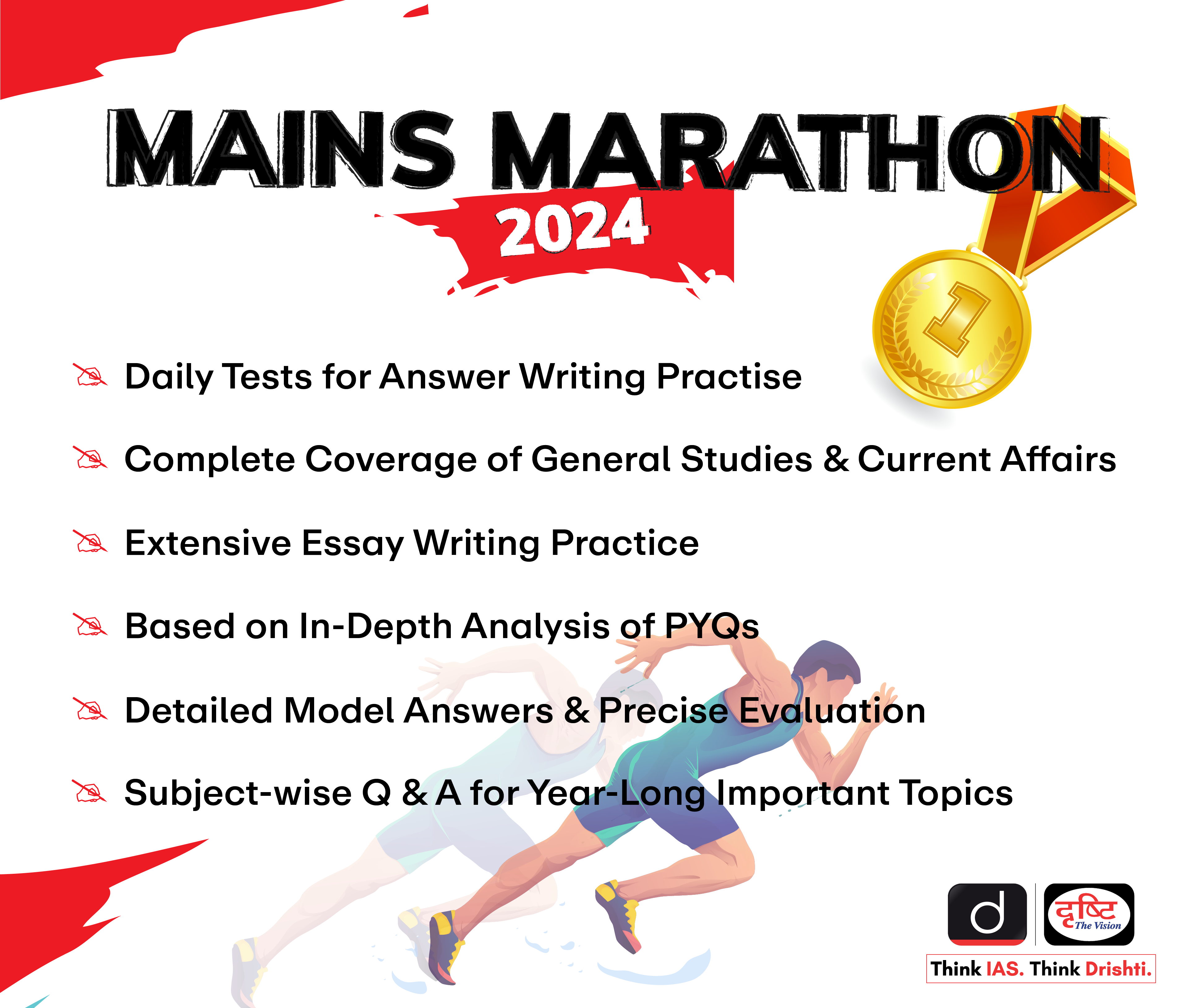
Indian Economy
World Biofuels Day 2024
For Prelims: Biofuels, Types of Biofuels, Ethanol Blending Program (EBP), National Policy on Biofuels, Differential Ethanol Pricing.
For Mains: Ethanol, Ethanol Blending Program: Significance, Challenges, Government Policies and Way Forward.
Why in News?
Recently, World Biofuel Day was observed on 10th August 2024. It aims to raise awareness about non-fossil fuels as sustainable energy alternatives and to highlight government initiatives that support the biofuel industry.
- The day also commemorates the successful operation of an engine on peanut oil by German engineer Sir Rudolf Diesel on 9th August 1893.
What are Biofuels?
- About:
- Biofuels are the fuel derived from the biomass of plants or animal wastes.
- It is commonly produced from corn, sugarcane and animal waste like cow dung.
- These come under renewable sources of energy.
- Most Common Biofuels:
- Ethanol: It is produced by fermentation of crop residues such as corn and sugarcane. After fermentation, the ethanol is mixed with petroleum, diluting it and reducing emissions.
- The most common blend is Ethanol-10, which contains 10% ethanol.
- Ethanol used in fuel is 99.9% pure alcohol, while 96% extra neutral alcohol is used in potable liquor and 94% rectified spirit is found in paints, cosmetics, pharmaceuticals, and other industrial products.
-
Biodiesel: It is a renewable, biodegradable fuel made from used cooking oil, recycled restaurant grease, yellow grease, or animal fats.
- Its production involves burning the oil or fat with alcohol in the presence of a catalyst.
- Ethanol: It is produced by fermentation of crop residues such as corn and sugarcane. After fermentation, the ethanol is mixed with petroleum, diluting it and reducing emissions.
- Significance:
- Environmental Benefits: Biofuels are crucial for environmental sustainability as they can help alleviate some of the negative impacts of fossil fuel use, such as greenhouse gas emissions and resource depletion and they also offer improved waste management solutions.
- Energy Security: India, the world's third-largest crude oil consumer, imports over 85% of its oil. With rising energy demand and heavy reliance on imports, biofuels can help improve energy security.
- Economic Benefits: Biofuels can cut India's oil imports and import bill, while also boosting farm incomes and addressing surplus production of crops like corn and sugarcane.
- Abundant Availability: Biofuels can be produced from a variety of sources, including crops, waste, and algae.
What are the Government Initiatives and Policies on Biofuels?
- National Policy on Biofuel, 2018: It aims to reduce import dependence by promoting fuel blending with bioethanol, biodiesel, and bio-CNG.
- Key elements include the Ethanol Blending Programme (EBP), production of second-generation ethanol (derived from forest and agricultural residues), increasing local fuel additive production under the “Make in India” program, and R&D in feedstock.
- In May 2022, the policy was amended to advance the 20% ethanol blending target from 2030 to 2025-26.
- Reduced GST on Ethanol:
- To encourage ethanol blending, the government lowered the Goods and Services Tax (GST) rate on ethanol used for blending under the Ethanol Blended Petrol (EBP) Programme from 18% to 5%.
- Pradhan Mantri JI-VAN Yojana, 2019:
- It aims to boost Second Generation (2G) ethanol production from cellulosic and lignocellulosic sources, including petrochemical routes, by offering financial support.
- Lignocellulosic biomass (or LC biomass) refers to plant biomass that is composed of cellulose, hemicellulose, and lignin. For examples cereal straw, bagasse, forest residues, and purpose-grown energy crops such as vegetative grasses.
- The government has approved an extension of the scheme's implementation timeline by 5 years, now running until 2028-29.
- GOBAR (Galvanizing Organic Bio-Agro Resources) DHAN Scheme, 2018:
- It focuses on managing and converting cattle dung and solid waste in farms to useful compost, biogas and bio-CNG, thus keeping villages clean and increasing the income of rural households.
- It was launched under the Swachh Bharat Mission (Gramin).
- Repurpose Used Cooking Oil (RUCO):
- It was launched by the Food Safety and Standards Authority of India (FSSAI) and aims for an ecosystem that will enable the collection and conversion of used cooking oil to biodiesel.
- Global Biofuels Alliance (GBA): It is a multi-stakeholder alliance to facilitate international cooperation and promote the use of sustainable biofuels.
- It was formally launched in 2023 by India along with the leaders of the USA, Brazil, Italy, Argentina, Singapore, Bangladesh, Mauritius and the UAE on the sidelines of the G20 Summit in New Delhi.
- Additionally, it aims to facilitate global biofuel trade and provide technical support for national biofuel programs.
Note:
- The first 2G ethanol project was inaugurated in Panipat, Haryana in 2022.
- Ethanol blending increased from 38 crore liters in 2013-14 to over 500 crore liters in 2022-23.
- Blending percentage rose from 1.53% to 12.06%, reaching 15.83% in July 2024.
- Oil Marketing Companies (OMCs) aim for a 20% ethanol blending target by the end of Ethanol Supply Year (ESY) 2025-26, requiring approximately 1,100 crore litres of ethanol.
- A total of 1,750 crore litres of ethanol distillation capacity is needed to meet blending requirements.
What are the Challenges Related to Biofuels?
- Environmental Issues: Biofuel production can strain land and water resources, cause pollution, and alter cropping patterns.
- Producing one litre of ethanol from sugar requires about 2,860 litres of water.
- Food vs. Fuel Challenge: There are concerns about balancing food security with energy security, depending on the choice of feedstock and production methods for biofuels.
- The availability and cost of these feedstocks can fluctuate based on factors like season, weather, market conditions, and policy changes.
- Conversion Efficiency and Yield: Ethanol production involves pretreatment, hydrolysis, fermentation, and distillation, with varying efficiencies and yields depending on feedstock type, process technology, and conditions.
- For example, lignocellulosic biomass, which is more abundant and diverse than sugarcane or corn, requires more intensive and complex pretreatment and hydrolysis to break down the cellulose and hemicellulose into fermentable sugars.
- The conversion efficiency and yield of ethanol also affect the economic viability and environmental impact of the production process.
- Infrastructure and Distribution: Ethanol production needs robust infrastructure for transporting, storing, and delivering feedstock and fuel, which can be costly and face logistical and regulatory challenges.
- For example, ethanol is corrosive and hygroscopic, which means that it can damage or contaminate the existing pipelines, tanks, and pumps that are designed for gasoline or diesel.
- Vehicle Compatibility and Performance: Vehicles need modifications to run on ethanol-blended fuels or pure ethanol, affecting engines, fuel systems, and maintenance practices.
- For example, Ethanol has a lower energy density than gasoline, which means that more volume of ethanol is needed to provide the same amount of energy, resulting in higher transportation and storage costs.
Way Forward
- Production Boost: Diversify feedstock by using non-food sources and waste, support R&D for advanced biofuels, expand and modernise production facilities, and establish distilleries near fuel depots to reduce costs and enhance logistics.
- Policy and Market Mechanisms: Gradually raise the ethanol blending mandate beyond 20% by 2025, establish fixed-price contracts with oil companies to ensure market stability, and invest in R&D for optimising blending ratios, engine compatibility, and conversion technologies.
- Technological Advancement: Invest in improved storage and transportation infrastructure, collaborate with automakers to develop ethanol-compatible engines, and enforce strict quality standards for ethanol to ensure performance and safety.
- Public Awareness and Education: Launch campaigns to educate consumers on the benefits of ethanol blending, address misconceptions, and encourage adoption. Ensure clear labelling of ethanol-blended fuels at stations to inform choices.
|
Drishti Mains Question Discuss the importance of India's Ethanol Blending Program in enhancing energy security, decreasing reliance on fossil fuels, and minimising environmental impact. |
UPSC Civil Services Examination, Previous Year Questions (PYQ)
Q. Given below are the names of four energy crops. Which one of them can be cultivated for ethanol? (2010)
(a) Jatropha
(b) Maize
(c) Pongamia
(d) Sunflower
Ans: (b)
Q. According to India’s National Policy on Biofuels, which of the following can be used as raw materials for the production of biofuels? (2020)
- Cassava
- Damaged wheat grains
- Groundnut seeds
- Horse gram
- Rotten potatoes
- Sugar beet
Select the correct answer using the code given below:
(a) 1, 2, 5 and 6 only
(b) 1, 3, 4 and 6 only
(c) 2, 3, 4 and 5 only
(d) 1, 2, 3, 4, 5 and 6
Ans: (a)

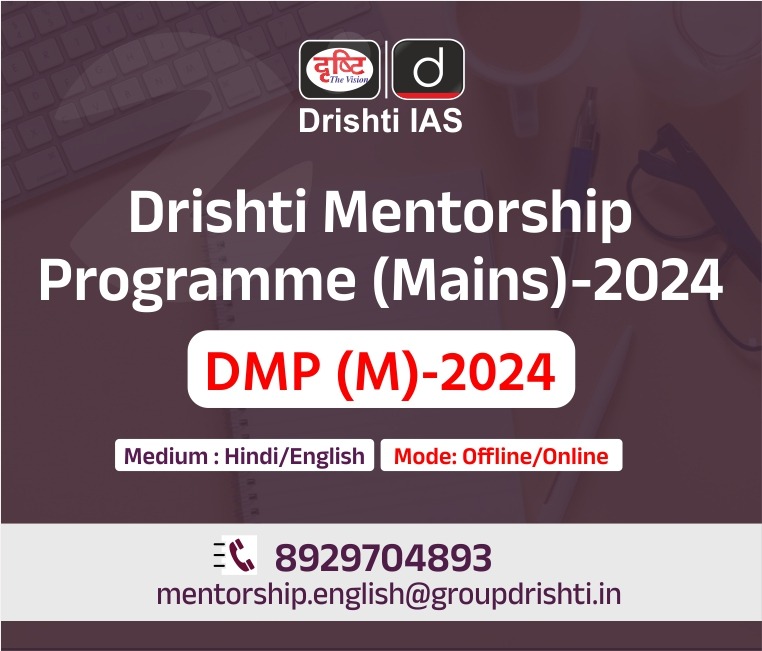
Indian Polity
Buddhadeb Bhattacharjee and Communism
For Prelims: Chief Minister, Communism, Special Economic Zone (SEZ), IT and IT Enabled Services, Padma Bhushan Award, Communist Party of India (CPI), Meerut Conspiracy Case (1929-1933), Bengal Famine, Royal Indian Navy mutiny 1946, Tebhaga Movement, Telangana Movement, Unlawful Activities (Prevention) Act, 1967
For Mains: Impact of Communist Ideology on Indian Political Landscape.
Why in News?
Former West Bengal Chief Minister and veteran communist leader Buddhadeb Bhattacharjee (1944-2024) recently passed away in Kolkata.
- He was CM of West Bengal from 2000 to 2011 and his regime was marked by a push for industrialisation despite his association with communism.
Who was Buddhadeb Bhattacharjee?
- About:
- He became the CM of West Bengal, succeeding Jyoti Basu. He led the Communist Party of India (Marxist) to power in two consecutive terms in 2001 and 2006.
- He served as CM until 2011 when Trinamool Congress ended the Left Front's 34-year rule.
- Regime and Policies:
- During his tenure, the Left Front government adopted a relatively open policy towards business despite following communism.
- He was behind the idea of setting up a Tata Nano plant in Singur and planning a special economic zone in Nandigram. However, the plan was abandoned after protests by local political parties on the issue of land acquisition.
- During his regime, West Bengal saw investments in sectors of IT and IT-enabled services.
- Awards: In 2022, the central government announced the Padma Bhushan award to him but he refused to accept it because Marxists are generally reluctant to accept awards for public service.
- Death: He had been suffering from chronic obstructive pulmonary disease and his body was donated to NRS Medical College and Hospital, Kolkata for medical research.
What is Communism?
- About:
- Communism is a political and economic ideology associated with Karl Marx. It advocates for a classless society where all property and wealth are collectively owned.
- Marx popularised these ideas in his 1848 work, “The Communist Manifesto”.
- Marx argued that capitalism leads to inequality and exploitation, benefiting a wealthy few at the expense of the working class (proletariat).
- Objective:
- Marx envisioned a world where labour was voluntary, and wealth was shared equally among all citizens.
- Marx proposed that government control of the economy would eliminate class distinctions.
- Prominent examples of communism were the Soviet Union and China. The Soviet Union collapsed in 1991 but China has drastically revised its economy to include some capitalism.
- Communist Economic System:
- The goal of communism was to establish a system where class distinctions were eliminated and the means of production were owned by the masses.
- It is characterised by a command economy where property is owned by the State, and production levels and prices of goods are determined by the state.
- Individuals cannot own private assets like shares or real estate.
- Its main goal is to abolish capitalism (an economic system ruled by private ownership).
- Marx abhorred capitalism because the proletariat was exploited and unfairly represented in politics.
What is the History and Impact of Communism in India?
- Formation: The Communist Party of India (CPI) was formed on 17th October 1920, in Tashkent, with contributions from Indian revolutionaries like MN Roy.
- In December 1925, an open conference in Kanpur led to the establishment of the CPI with headquarters in Bombay.
- Role in Freedom Struggle:
- Communist ideas influenced the Congress, pushing it towards a stronger stance against British rule, a departure from the mild resistance.
- The British reacted by making arrests and launching conspiracy cases, most notably the Meerut Conspiracy Case (1929-1933).
- The communists organised relief efforts during the Bengal Famine of 1943.
- Mass Struggles: Post World War II years saw a surge in working-class struggles and peasant mobilisations, including the Royal Indian Navy mutiny 1946.
- Tebhaga Movement: A significant peasant agitation in Bengal demanding better sharecropping rights, showcasing Hindu-Muslim unity.
- Telangana Movement (1946-1951): They fought against feudal exploitation and autocratic rule, leading to land redistribution.
- Post Independence (1947):
- In the first Lok Sabha (1952-57), the single largest party in the opposition was the Communist Party of India (CPI).
- In 1957, the CPI won the state elections in Kerala. Kerala was the first State in Independent India to democratically elect a communist government.
- Split in the Communism Movement: Some members of the CPI believed that the communists should cooperate with the left-leaning group within the Congress party who opposed both imperialism and feudalism.
- It led to the Communist Party of India splitting into two in 1964.
- The faction that opposed the path of cooperating with the Congress formed the Communist Party of India (Marxist), or CPI (M), the other faction retained the name Communist Party of India (CPI).
- In 1969, believing in the need for armed struggle like Mao Zedong, another group of communists formed the Communist Party of India (Marxist-Leninist) or CPI (ML).
What is Maoism?
- About:
- Maoism is a form of communism developed by Mao Tse Tung of China.
- It is a doctrine to capture state power through a combination of armed insurgency, mass mobilisation and strategic alliances.
- The Maoists also use propaganda and disinformation against State institutions as other components of their insurgency doctrine.
- Mao called this process, the “Protracted People's War”, where the emphasis is on the “military line” to capture power.
- Central Theme:
- The central theme of Maoist ideology is the use of violence and armed insurrection as a means to capture State power.
- ‘Bearing of arms is non-negotiable’ as per the Maoist insurgency doctrine.
- The Maoist ideology glorifies violence and the People's Liberation Guerrilla Army (PLGA) cadres are trained specifically in the worst forms of violence to evoke terror among the population under their domination.
- The central theme of Maoist ideology is the use of violence and armed insurrection as a means to capture State power.
- Maoists' Influence in India:
- The largest and the most violent Maoist formation in India is the Communist Party of India (Maoist).
- The Communist Party of India (Maoist) was formed in 2004, through the merger of the Communist Party of India (Marxist–Leninist) People's War (People's War Group), and the Maoist Communist Centre of India (MCCI).
- The CPI (Maoist) and all its front organisation formations have been included in the list of banned terrorist organisations under the Unlawful Activities (Prevention) Act, 1967.
- The Front Organisations are the off-shoots of the parent Maoist party, which professes a separate existence to escape legal liability.
What is the Difference Between Marxism and Maoism?
- Focus of Revolution: Both focus on a proletariat revolution that would change society.
- Marxism focuses on the urban workers while Maoism focuses on the peasant or farming population.
- View on Industrialization: Marxism believes in an economically strong state that is industrialised.
- Maoism has a broader economic view giving necessary importance to agriculture as well.
- Driving Force of Social Change: Marxism says that social change is driven by the economy.
- However, Maoism puts emphasis on the ‘malleability of human nature.’ Maoism talks about how human nature can be changed by using only willpower.
- Influence of Economy on Society: Marxism believed that everything that happens in a society is linked to the economy.
- Maoism believed everything that happens in a society is a result of human will.
Conclusion
Communism has had a significant and complex history in India, influencing both political and social landscapes. Leaders like Buddhadeb Bhattacharjee played pivotal roles in shaping state policies, particularly in West Bengal, where communism held sway for decades. While the ideology promoted social justice and worker's rights, its implementation often faced challenges, particularly in balancing industrial growth with the principles of equity and communal harmony.
|
Drishti Mains Question: Q. Discuss the role of the communist movement in pre and post-independent India. How did they help strengthen Indian democracy by voicing the concerns of vulnerable sections? |
UPSC Civil Services Examination Previous Years’ Questions (PYQs)
Prelims
Q. Consider the following events: (2018)
- The first democratically elected communist party government formed in a State in India.
- India’s then largest bank, ‘Imperial Bank of India’, was renamed ‘State Bank of India’.
- Air India was nationalised and became the national carrier.
- Goa became a part of independent India.
Which of the following is the correct chronological sequence of the above events?
(a) 4 – 1 – 2 – 3
(b) 3 – 2 – 1 – 4
(c) 4 – 2 – 1 – 3
(d) 3 – 1 – 2 – 4
Ans: (b)
Q. With reference to Indian National Movement, consider the following pairs: (2019)
Person - Position held
- Sir Tej Bahadur Sapru : President, All India Liberal Federation
- K. C. Neogy : Member, The Constituent Assembly
- P. C. Joshi : General Secretary, Communist Party of India
Which of the pairs given above is/are correctly matched?
(a) 1 only
(b) 1 and 2 only
(c) 3 only
(d) 1, 2 and 3
Ans: (d)
Mains
Q. Since the decade of the 1920s, the national movement acquired various ideological strands and thereby expanded its social base. Discuss. (2020)
Q. Highlight the importance of new objectives that got added to the vision of Indian independence since the twenties of the last century. (2017)
Q.What were the major political, economic and social developments in the world which motivated the anti-colonial struggle in India? (2014)


Governance
DNA Profiling in the Justice System
For Prelims: Deoxyribonucleic acid (DNA), DNA Profiling, Monozygotic twins, Law Commission of India, Article 20(3), Bharatiya Nagarik Suraksha Sanhita (BNSS) 2023
For Mains: DNA Profiling and challenges, Application of Emerging Technologies in the Judicial System
Why in News?
The June 2024 Madras High Court decision to overturn a Protection of Children from Sexual Offences (POCSO) Act, 2012 conviction has reignited debate on the reliability of Deoxyribonucleic acid (DNA) profiling in legal cases.
- The court stressed the importance of not relying solely on DNA evidence for convictions, highlighting the need for corroborating evidence.
What is DNA profiling?
- About: DNA profiling, or DNA fingerprinting, identifies individuals by analysing unique regions of their DNA. While human DNA is 99.9% identical, the remaining 0.1% includes unique sequences called Short Tandem Repeats (STRs), which are crucial for forensic investigations.
- DNA as Genetic Code: DNA is the genetic material found in the nucleus of eukaryotic cells (animal and plant) and the cytoplasm of prokaryotic cells (bacteria). It is structured as a double helix.
- It is organised into 23 pairs of chromosomes, which are inherited equally from both parents, which encode genetic information in sequences of four nucleotides called Adenine (A), Guanine (G), Thymine (T), and Cytosine (C).
- DNA can be extracted from various biological materials such as blood, saliva, semen, and other body fluids. These samples are collected and analysed to generate a DNA profile.
- DNA left behind during physical contact, known as touch DNA, is often in low quantities and not ideal for profiling due to potential contamination.
- DNA profiling focuses on specific regions called genetic markers, with STRs being the preferred markers due to their variability among individuals, except monozygotic twins (identical twins).
- Process of DNA Profiling:
-
Isolation: Extracting DNA from the collected biological samples.
-
Purification & Quantitation: Ensuring the DNA is free from contaminants and determining its concentration.
-
Amplification: Replicating selected genetic markers to generate enough DNA for analysis.
-
Visualization & Genotyping: Identifying the specific sequences of the DNA markers.
-
Statistical Analysis & Interpretation: Comparing the DNA profiles and calculating the probability of a match.
-
Special Cases:
- In cases involving degraded samples, miniSTRs (smaller DNA fragments) may be used as they are more likely to survive environmental stress. Additionally, mitochondrial DNA (mtDNA) is useful for tracing maternal lineage and is often employed when nuclear DNA is insufficient.
-
How is DNA Profiling Used in Legal Proceedings?
- Matching Process: In forensic cases, DNA profiles from evidence are compared with known or reference samples. The results of this comparison can lead to three possible outcomes:
- Match: The DNA profiles are indistinguishable, suggesting a common source.
- Exclusion: The profiles differ, indicating different sources.
- Inconclusive: The data does not provide a clear result.
- Statistical Support: Even if profiles match, this does not conclusively prove identity; instead, experts provide a "random occurrence ratio" indicating how often similar profiles may appear in the population.
- Legal Interpretation: The Madras High Court and the Law Commission of India have highlighted that a DNA match does not conclusively prove identity.
- The "random occurrence ratio" indicates how frequently a particular DNA profile might appear in the population, which may not be sufficient to establish guilt beyond a reasonable doubt.
What are the Legal Provisions Regarding DNA Profiling in India?
- Legal Framework:
- Indian Constitution: Article 20(3) protects individuals from being forced to testify against themselves, ensuring protection against self-incrimination.
- Article 21 safeguards the right to life and personal liberty, prohibiting unauthorised interference.
- Code of Criminal Procedure, 1973 (CrPC): Section 53 authorises DNA profiling of suspects at the investigation agency's request. Section 53A specifically allows DNA profiling for rape suspects.
- The Bharatiya Nagarik Suraksha Sanhita (BNSS) 2023 replaced the Code of Criminal Procedure (CrPC) of 1973.
- Indian Evidence Act, 1872: Sections 45-51 pertains to the admissibility of expert testimony, including DNA evidence, in court.
- Indian Constitution: Article 20(3) protects individuals from being forced to testify against themselves, ensuring protection against self-incrimination.
-
Judicial Precedents:
- Pattu Rajan v. State of T.N. 2019: Supreme Court considered that the probative value of DNA evidence varies depending on the facts and circumstances of the case, and the weight accorded to other evidence on record, whether contrary or corroborative.
- They emphasised that DNA evidence, though increasingly accurate and reliable, is not infallible, and the absence of such evidence should not lead to an adverse inference against a party, especially in the presence of other cogent and reliable evidence.
-
Sharda vs. Dharmpal, 2003: The Supreme Court upheld the authority of marital courts to mandate medical examinations including DNA profiling, without violating Article 21.
-
Das @ Anu v. State of Kerala, 2022: The Kerala High Court held that the right against self-incrimination under Article 20(3) applies only to testimonial evidence, and drawing DNA samples in a criminal case, especially a sexual offence, does not violate this right.
- The court also noted that Section 53A of the CrPC empowers the police to send the accused to a medical practitioner for collecting samples.
- Pattu Rajan v. State of T.N. 2019: Supreme Court considered that the probative value of DNA evidence varies depending on the facts and circumstances of the case, and the weight accorded to other evidence on record, whether contrary or corroborative.
- Law Commission Recommendations:
- The 271st report (2017) by the Indian Law Commission proposed comprehensive legislation for DNA profiling, leading to the DNA Technology (Use and Application) Regulation Bill, 2019. Urged for a unique regulatory framework to prevent misuse and restrict DNA profiling to legal uses only.
What are the Limitations of DNA Profiling?
- Environmental Stress and Sample Degradation: DNA can be compromised by environmental factors, leading to incomplete or degraded samples.
- Techniques like miniSTRs and mtDNA analysis are used in these cases, but they still come with limitations.
- Complexity and Reliability: DNA profiling is a complex process that requires precise techniques and conditions. Issues such as contamination, improper handling, or delays in testing can affect the reliability of the results.
- Cost: DNA analysis can be expensive, limiting its accessibility in some cases.
- Legal Interpretation: While DNA evidence is a powerful tool, it should not be viewed as infallible (always effective). Courts must consider DNA evidence alongside other corroborating or contradicting evidence to ensure a fair and just verdict.
- The existing legal framework recognizes DNA evidence but lacks a comprehensive regulatory structure.
- The DNA Technology (Use and Application) Regulation Bill, 2019, aims to address these gaps. The DNA Bill, introduced in Parliament multiple times, faced opposition on grounds of the accuracy of DNA technology, potential threats to individual privacy, and the possibility of abuse.
Way Forward
- Enhancing Accuracy and Reliability: Invest in research and development to improve DNA profiling techniques and address issues related to sample degradation and contamination. Standardise procedures and ensure quality control in forensic labs.
- Ensuring Fair Legal Practices: Emphasise the importance of corroborating evidence in convictions. Develop guidelines for the admissibility and weight of DNA evidence in court to ensure just and fair outcomes.
- DNA Technology Bill: The DNA Technology Bill, 2019, aims to create a regulatory framework to prevent misuse and ensure DNA profiling is used appropriately. This bill needs to be revisited and potentially revised to address privacy concerns and ensure robust safeguards.
- Transparency in Legal Processes: Ensure transparency in how DNA evidence is collected, analysed, and presented in court to maintain public confidence.
|
Drishti Mains Question: Q. What are the potential issues with relying solely on DNA Profiling for convictions, and how can these issues be mitigated to ensure justice in the judicial process? |
UPSC Civil Services Examination, Previous Year Questions (PYQs)
Prelims
Q. Consider the following statements: DNA Barcoding can be a tool to:(2022)
- assess the age of a plant or animal.
- distinguish among species that look alike.
- identify undesirable animal or plant materials in processed foods.
Which of the statements given above is/are correct?
(a) 1 only
(b) 3 only
(c) 1 and 2
(d) 2 and 3
Ans: (B)
Q: With reference to the recent developments in science, which one of the following statements is not correct? (2019)
(a) Functional chromosomes can be created by joining segments of DNA taken from cells of different species.
(b) Pieces of artificial functional DNA can be created in laboratories.
(c) A piece of DNA taken out from an animal cell can be made to replicate outside a living cell in a laboratory.
(d) Cells taken out from plants and animals can be made to undergo cell division in laboratory petri dishes.
Ans: (A)


Important Facts For Prelims
Antarctica's Deep Winter Heatwaves
Why in News?
Recently, Antarctica has been experiencing a significant deep-winter heatwave, marking the second instance of record-breaking temperatures in two years.
- Ground temperatures have risen by an average of 10 degrees Celsius above normal since mid-July 2024, with some areas experiencing increases of up to 28 degrees Celsius.
What are the Causes of Deep-Winter Heat Waves in Antarctica?
- Weakening of the Polar Vortex:
- The polar vortex (also known as polar pig) is a large area of low pressure and cold air surrounding both of the Earth’s poles.
- The term "vortex" refers to the counterclockwise flow of air that helps keep the colder air near the Poles. It always exists near the poles, but weakens in summer and strengthens in winter.
- Higher temperatures and powerful atmospheric waves (periodic disturbances in the fields of atmospheric variables) disrupted the vortex.
- This allowed cold air to escape and warm air from above to descend. The arrival of this warm air led to a rise in temperatures in the region.
- The polar vortex (also known as polar pig) is a large area of low pressure and cold air surrounding both of the Earth’s poles.
- Reduction of Antarctic Sea Ice:
- Antarctic sea ice has reached historically low levels, reducing its ability to reflect solar energy and act as a barrier between cold air and warmer waters. This loss contributes to rising global temperatures.
- High Rate of Global Warming:
- Antarctica is experiencing warming at a rate nearly double that of the global average, estimated at 0.22 to 0.32 degrees Celsius per decade.
- As per IPCC estimates Earth as a whole is warming at the rate of 0.14-0.18 degrees Celsius per decade.
- This accelerated warming is primarily driven by anthropogenic climate change, which exacerbates the effects of natural climate variability.
- Antarctica is experiencing warming at a rate nearly double that of the global average, estimated at 0.22 to 0.32 degrees Celsius per decade.
- Impact of the Southern Ocean:
- The warming Southern Ocean absorbs more heat due to reduced sea ice, creating a feedback loop that raises air temperatures over Antarctica and increases the risk of extreme weather events.
What are the Consequences of Heat Waves in Antarctica?
- Accelerated Ice Melt: Antarctica's rising winter temperatures are accelerating ice mass loss, with recent decades seeing a 280% increase compared to the 1980s and 1990s.
- In March 2022, a heat wave caused a section of ice of around 1300 square kilometres to collapse, highlighting the significant risk of rising global sea levels.
- Global Sea Level Rise: The Antarctic ice Sheet covers 98% of Antarctica and contains over 60% of the world's freshwater.
- A slight increase of a few feet in sea levels could result in the displacement of around 230 million people residing within 3 feet of existing high tide lines, posing a significant threat to coastal cities and ecosystems.
- Disruption of Ocean Circulation: The influx of freshwater from melting ice alters the salinity and density of ocean waters, slowing down global ocean circulation.
- A 2023 study revealed that this slowdown weakens the ocean's capacity to store and transport heat, carbon, and nutrients, which are essential for climate regulation. Reduced ocean circulation decreases heat and CO2 absorption, intensifying global warming and increasing the frequency of extreme weather events that affect ecosystems and human populations worldwide.
- Ecosystem Disruption: Temperature changes and ice loss disrupt local ecosystems, threatening species dependent on stable ice, leading to biodiversity loss and altering global food webs.
- For example species like polar bears and penguins rely on stable ice for survival.
- Feedback Loops: Melting ice reduces sunlight reflection (albedo effect), increasing heat absorption by oceans and land, which accelerates further ice melt, creating a feedback loop that worsens climate change.
- Albedo is an expression of the ability of surfaces to reflect sunlight (heat from the sun).
India’s Initiatives for Antarctica
UPSC Civil Services Examination, Previous Year Question (PYQ) :
Q. With reference to the water on the planet Earth, consider the following statements:(2021)
- The amount of water in the rivers and lakes is more than the amount of groundwater.
- The amount of water in polar ice caps and glaciers is more than the amount of groundwater.
Which of the statements given above is/are correct?
(a) 1 only
(b) 2 only
(c) Both 1 and 2
(d) Neither 1 nor 2
Ans: (b)


Important Facts For Prelims
International Day of Indigenous Peoples
Why in News?
Recently, International Day of Indigenous Peoples was observed on 9th August to promote advocacy for Indigenous rights.
- In another development, the Indian Institute of Science (IISc), Bengaluru has been entrusted to train tribal students under Semiconductor Fabrication & Characterization Training for tribal students as part of Tribal Research Information, Education, Communication and Events (TRI-ECE).
What is International Day of Indigenous Peoples?
- About: Observed annually on 9th August, following the UN General Assembly's recognition of this day in December 1994.
- The day recognizes the first meeting of the United Nations Working Group on Indigenous Populations in Geneva in 1982.
- Theme for 2024: "Protecting the Rights of Indigenous Peoples in Voluntary Isolation and Initial Contact.".
- Key Facts Related to Indigenous Peoples Globally:
- Around 200 groups of Indigenous Peoples currently live in voluntary isolation in Bolivia, Brazil, Colombia, Ecuador, India etc.
- There are an estimated 476 million Indigenous Peoples in the world living across 90 countries.
- They make up less than 6% of the world's population but account for at least 15% of the poorest.
- They speak an overwhelming majority of the world’s estimated 7,000 languages and represent 5,000 different cultures.
What are Key Facts Related to Tribals in India?
- About:
- In India, the term 'Adivasi' is used as an umbrella term to define a host of ethnic and tribal people that are considered as the aboriginal population of India.
- According to the 2011 census, these ancestral groups make up approximately 8.6% of India's general population, which adds up to around 104 million people.
- Essential Characteristics: According to Lokur Committee (1965), the essential characteristics of the tribes are:
-
Indication of Primitive Traits
-
Distinctive Culture
-
Shyness of Contact with the Community at Large
-
Geographical Isolation
-
Backwardness
-
- Scheduled Tribes (STs) in India refer to the various indigenous communities or tribes that are recognized by the government for special protection and assistance.
- Basic Safeguards Provided by the Indian Constitution for STs:
-
Educational & Cultural Safeguards:
- Article 15(4): Special provisions for the advancement of other backward classes (it includes STs)
- Article 29: Protection of Interests of Minorities (it includes STs)
- Article 46:The State shall promote, with special care, the educational and economic interests of the weaker sections of the people, and in particular, of the Scheduled Castes, and the Scheduled Tribes, and shall protect them from social injustice and all forms of exploitation.
- Article 350: Right to conserve distinct language, script or culture.
- Political Safeguards:
- Article 330: Reservation of seats for STs in Lok Sabha,
- Article 332: Reservation of seats for STs in State Legislatures
- Article 243: Reservation of seats in Panchayats.
- Administrative Safeguard: Article 275 provides for the grant of special funds by the Union Government to the State Government for promoting the welfare of Scheduled Tribes and providing them with a better administration.
-
Particularly Vulnerable Tribal Groups (PVTGs)
- PVTGs are more vulnerable among the tribal groups.
- In 1973, the Dhebar Commission created Primitive Tribal Groups (PTGs) as a separate category, who are less developed among the tribal groups. In 2006, the Government of India renamed the PTGs as PVTGs.
- In this context, in 1975, the Government of India initiated to identify the most vulnerable tribal groups as a separate category called PVTGs and declared 52 such groups, while in 1993 an additional 23 groups were added to the category, making it a total of 75 PVTGs out of 705 Scheduled Tribes.
- PVTGs have some basic characteristics - they are mostly homogenous, with a small population, relatively physically isolated, absence of written language, relatively simple technology and a slower rate of change etc.
- Among the 75 listed PVTGs the highest number are found in Odisha.
What is Semiconductor Fabrication & Characterization Training for Students from Tribal Community Project?
- About: The project seeks to provide specialised training to tribal students to foster advanced technological skills.
-
Objective: It aims to deliver 2100 NSQF-certified level 6.0 & 6.5 training in semiconductor technology to tribal students over three years.
- National Skills Qualifications Framework (NSQF) Level 6.0 typically corresponds to a Bachelor's degree or equivalent and NSQF Level 6.5 often represents a specialised skill set or advanced diploma beyond a Bachelor's degree.
- Training Structure: Basic training in semiconductor technology will be provided to 1,500 tribal students, with 600 selected for advanced training. Eligible applicants must have a degree in an engineering subject.
Government Initiatives For Scheduled Tribes
UPSC Civil Services Examination, Previous Year Question (PYQ)
Prelims:
Q. Consider the following statements about Particularly Vulnerable Tribal Groups (PVTGs) in India: (2019)
- PVTGs reside in 18 States and one Union Territory.
- A stagnant or declining population is one of the criteria for determining PVTG status.
- There are 95 PVTGs officially notified in the country so far.
- Irular and Konda Reddi tribes are included in the list of PVTGs.
Which of the statements given above are correct?
(a) 1, 2 and 3
(b) 2, 3 and 4
(c) 1, 2 and 4
(d) 1, 3 and 4
Ans: (c)
Q With reference to the history of India, “Ulgulan” or the Great Tumult is the description of which of the following events? (2020)
(a) The Revolt of 1857
(b) The Mappila Rebellion of 1921
(c) The Indigo Revolt of 1859-60
(d) Birsa Munda’s Revolt of 1899-1900
Ans: (d)
Q. Under which Schedule of the Constitution of India can the transfer of tribal land to private parties for mining be declared null and void? (2019)
(a) Third Schedule
(b) Fifth Schedule
(c) Ninth Schedule
(d) Twelfth Schedule
Ans: (b)
Q Under the Scheduled Tribes and Other Traditional Forest Dwellers (Recognition of Forest Rights) Act, 2006, who shall be the authority to initiate the process for determining the nature and extent of individual or community forest rights or both? (2013)
(a) State Forest Department
(b) District Collector/Deputy Commissioner
(c) Tahsildar/Block Development Officer/Mandal Revenue Officer
(d) Gram Sabha
Ans: (d)
Q. In the areas covered under the Panchayat (Extension to the Scheduled Areas) Act, 1996, what is the role/power of Gram Sabha? (2012)
- Gram Sabha has the power to prevent alienation of land in the Scheduled Areas.
- Gram Sabha has the ownership of minor forest produce.
- Recommendation of Gram Sabha is required for granting prospecting licence or mining lease for any mineral in the Scheduled Areas.
Which of the statements given above is/are correct?
(a) 1 only
(b) 1 and 2 only
(c) 2 and 3 only
(d) 1, 2 and 3
Ans: (b)
Q. Consider the following statements: (2019)
- As per recent amendment to the Indian Forest Act, 1927, forest dwellers have the right to fell the bamboos grown on forest areas.
- As per the Scheduled Tribes and Other Traditional Forest Dwellers (Recognition of Forest Rights) Act, 2006, bamboo is a minor forest produce.
- The Scheduled Tribes and Other Traditional Forest Dwellers (Recognition of Forest Rights) Act, 2006 allows ownership of minor forest produce to forest dwellers.
Which of the statements given above is/are correct?
(a) 1 and 2 only
(b) 2 and 3 only
(c) 3 only
(d) 1, 2 and 3
Ans: (b)


Rapid Fire
Timor-Leste Bestows Top Civilian Honor on President Murmu
Recently, President Horta of Timor-Leste awarded President Droupadi Murmu the Grand-Collar of the Order of Timor-Leste, recognizing her contributions to public service, education, and women's empowerment.
- President Murmu and Prime Minister Gusmão observed the signing of three MoUs covering Cultural Exchanges, the collaboration between Prasar Bharati and Timor-Leste Radio & Television (RTTL), and visa exemptions for diplomatic, official, and service passports.
East Timor:
- East Timor also known as Timor-Leste is bounded by the Timor Sea to the southeast, the Wetar Strait to the north, the Ombai Strait to the northwest, and western Timor (part of the Indonesian province of East Nusa Tenggara) to the southwest.
- East Timor comprises the eastern half of Timor Island, the western half of which is part of Indonesia.
- East Timor, colonised by Portugal in the 18th century, was annexed by Indonesia in 1975 after Portugal withdrew, leading to a long struggle for independence.
- In a 1999 UN-supervised referendum, East Timorese voted for independence, which led to further violence until peace-keeping forces intervened, and the country was officially recognized by the UN in 2002.
- East Timor has applied for ASEAN membership and currently holds observer status.
Read More: East Timor


Rapid Fire
World Elephant Day
World Elephant Day is celebrated every year on the 12th August to bring awareness to the status of Asian and African elephants in the wild.
- The theme for 2024 is “Personifying prehistoric beauty, theological relevance, and environmental importance”.
- India is home to about 60% of the world's Asian elephant population, with an estimated 27,312 individuals as per the 2017 census and 138 identified elephant corridors.
- Elephants have a gestation period of about 22 months, the longest of any land animal.
- Asian elephants(Indian) are classified as Endangered on the IUCN Red List due to habitat loss, human-elephant conflict, and poaching.
Read More: World Elephant Day, Elephant Corridors


Rapid Fire
World Lion Day
World Lion Day, established by Big Cat Rescue and celebrated on 10th August since 2013, highlights the urgent need for lion conservation due to threats like habitat loss, human-wildlife conflict, and poaching.
- As apex predators, lions control herbivore populations and support ecosystem health, with a lifespan of 10-14 years in the wild and a birth interval of around 2 years.
- In India, the Asiatic lion, a symbol of strength in the national emblem, has seen its population increase from 523 in 2015 to about 674 in 2020 due to successful conservation efforts.
- Launched on 15th August 2020, 'Project Lion' aims to secure the future of Asiatic lions through habitat improvement, advanced monitoring, and addressing human-wildlife conflict.
Read More: World Lion Day 2022, Asiatic Lion Conservation Project


Rapid Fire
Omkareshwar Floating Solar Project
Recently, SJVN Green Energy Limited (SGEL) commissioned a 90 MW Omkareshwar Floating Solar Project.
- SJVN Limited is a Mini Ratna Schedule 'A' Central Public Sector Undertaking (CPSU) under the Ministry of Power, Government of India.
- Omkareshwar Floating Solar Project
- Located in the Omkareshwar Floating Solar Park on river Narmada in Khandwa, Madhya Pradesh.
- It is the largest floating solar park in India.
- The project aims to significantly reduce carbon emissions by 2.3 lakh tons of CO2, supporting India's goal of achieving net-zero emissions by 2070.
- It will also help in water conservation by reducing water evaporation.
- India's installed solar energy capacity has grown significantly, reaching 85.47 GW as of June 2024.
- As of May 2024, renewable energy sources have a total installed capacity of 195.01 GW, which includes wind power at 46.65 GW, biomass/cogeneration at 10.35 GW, small hydropower at 5 GW, waste-to-energy at 0.59 GW, and large hydropower at 46.92 GW.
Read More: India Emerges as Third-Largest Solar Power Producer in 2023


Rapid Fire
Bacterial Communities in Microwave Ovens
Microorganisms thriving in extreme environments like microwave ovens have been studied to understand their evolutionary adaptations.
- Key Findings:
- The dominant ones belonged to the Bacillus, Micrococcus and Staphylococcus genera, which commonly live on human skin and surfaces that people frequently touch.
- A few bacteria types associated with food-borne illnesses, including Klebsiella and Brevundimonas, also grew in household microwaves.
- Laboratory microwave ovens contained the greatest genetic diversity (variation in genes within a species) of bacteria.
- Microwave heating uses electromagnetic waves (300 MHz to 300 GHz) to generate heat and inactivate most microorganisms in food.
- Bacteria:
- Bacteria are microscopic living organisms that have only one cell. It has various shapes like spheres, rods, and spirals. They can be good or bad.
- Good Bacteria: Some are found in the intestines and help break down food and prevent constipation and diarrhoea like Bifidobacteria.
- Bad Bacteria: Some of them cause diseases like Typhoid fever by Salmonella Typhi.
- Extremophiles are organisms that can survive and even thrive, in the harshest of environments, including inside scorching hydrothermal vents, sub-zero Antarctic ice and the crushing pressures of Earth’s crust.
- Bacteria are microscopic living organisms that have only one cell. It has various shapes like spheres, rods, and spirals. They can be good or bad.
Read More: Metagenomics

